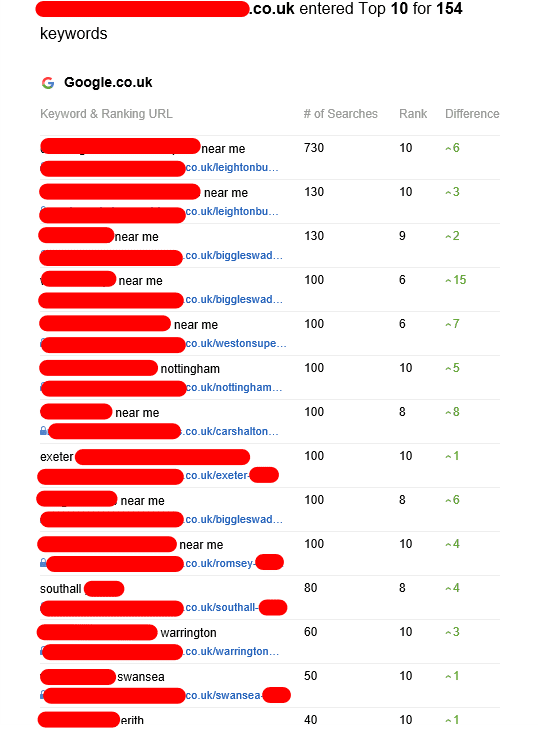Tiered Backlinks Service
Backlinks with varying levels of importance are a crucial tool in any SEO campaign. They can help you build a strong backlink profile without attracting search engine penalties. It is important to learn how to use them properly.
Tier two backlinks typically come from less authoritative sources like directories, blogs, and article networks. The importance of relevance and quality does not take precedence over quantity at this point.
First Tier
Tiered link development is an SEO technique that helps establish a high-quality backlink profile for your site. It works by replicating the process that occurs when highly authoritative content is distributed across the internet. This is accomplished through the network or pages which endorse a particular resource and then redirecting their link juice to a page promoted by the site. This method allows you to create a huge number of links without damaging the quality of the content on your site.
Tier 1 links are your top quality links that come from a provider that provides different levels of backlinks. They should only be positioned on trustworthy websites that are relevant to your niche. These links must also have high domain authority. This is the most important aspect of your tiered link campaign, and can be a challenge. Utilize tools like Moz, Ahrefs or Loganix DA Checker to determine the domain authority of your Tier 1 donors.
Tier 2 is the next stage in tiered linking. Tier 2 links are less powerful than the links in Tier 1, but still can boost your search engine rank. You can make use of blog comments, forum posts and wikis to construct Tier 2 links. This strategy should only be employed if it's not in violation of rules. Also be careful not to automate.
Second Tier
It is possible to improve the quality and quantity of your backlinks by using the Tier system. This will not result in penalties from search engines. However, it can be a huge time drain. Tiered link building strategies require linking to a variety of pages on an online site, which requires a lot of work. It can take months to see the results of the tiered link building campaign. This is due to the fact that PageRank takes a lengthy period of time before it is passed to the final web page.
The first tier should consist up of high-quality, dofollow links which originate from sites that have high Domain Authority (DA). This is the point where the value of a tiered backlink is. To verify the domain authority of your tier-one links it is crucial to use a reputable domain checker such as Moz, Ahrefs or SEMrush.
For the second level for the second tier, you will need to obtain links from third-party sources related to your topic. This can be profiles on social media sites, un-spammed blogs, and Q&A sites. networks. Certain SEO practitioners employ automated tools for building links to achieve this goal.
It is important to note that the links you receive for your tier two must be natural-looking. According to Google's Webmaster Guidelines, if a link appears to be fake it may be flagged as spam and penalized accordingly. This could result in dramatic drop in rankings or the issue of manual actions by Google's human reviewers.
Third Tier
Link building in tiers is a wonderful method of increasing your site's authority. This allows you to reap the value of low-quality links while minimizing the risk of being penalized. This method also increases the effectiveness of your SEO efforts by allowing you to acquire links at a cost that is lower. However tiered link building isn't without its flaws. It could be risky to use too many links that are low-quality or are not relevant to your website. It is important not to overdo your number of tier links as Google could penalize your website.
Tier 2 links tend to be less trustworthy than tier one, and are intended to boost the domain authority for the backlinks that were originally created. They can be found via blog comments, forums, wikis and other Web 2.0 resources. This kind of link is also referred to as "pumping levels." It is important to ensure that your tier 2 links are relevant and high-quality.
Google could make a manual decision if you employ too many automated tools for Tier 3 link building. Many optimizers utilize GSA, Xrumer, and ZennoPoster to automate their Tier 3 link building. Tier 3 links must be sourced from trusted websites and niches. Google will penalize the website when it discovers they are part of a link scheme.
Fourth Tier

Tiered link building can be utilized to increase the authority of a website and its SEO ranking. However, it's important to apply this strategy with care so that you don't break Google's guidelines. If you build high-quality backlinks in tier 3 on sites that are not of high quality or have a poor reputation, for instance, it can result in your website losing rank. If you're acquiring links quickly, Google may also penalize your website.
To avoid this, you must focus on creating a varied range of first-tier backlinks from trustworthy sources. You can include links of the first level in guest posts or roundups of links and directories of articles. It is also possible to use Tier two links to increase the effectiveness of your first-tier backlinks. This is because Tier two backlinks tend to be better than third- tier backlink s.
It's also important to keep in mind that tiered link building requires an enormous amount of effort and money. You'll have to pay for automated tools and content writers, for example. You'll also need to track the various levels to ensure your campaign is constant. If you're unable to devote the time and effort needed to implement this strategy, it's best to outsource it to an agency that specializes in tiered link development.
